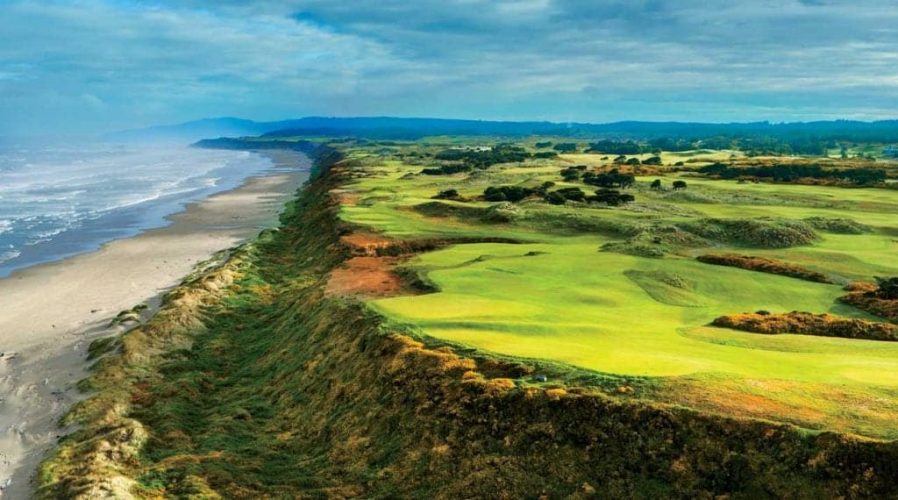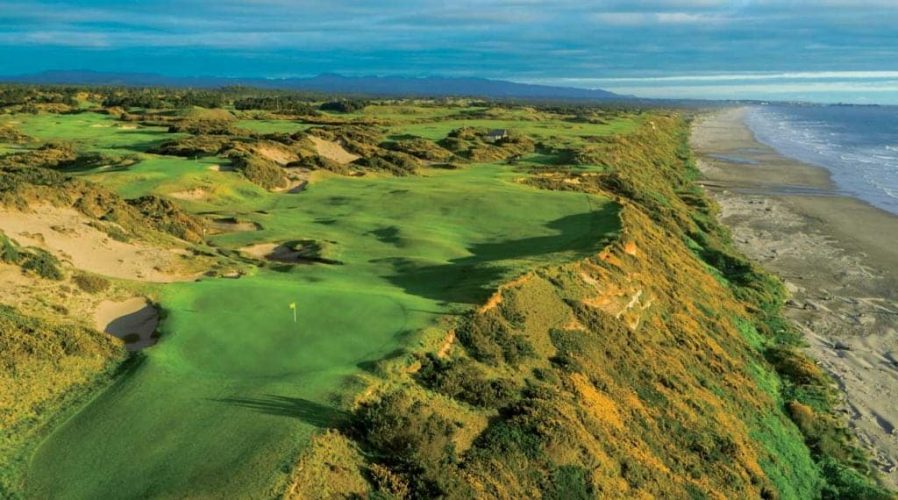You'll uncover that Evan Schiller evolved from a PGA professional who qualified for the 1986 U.S. Open into golf's premier course photographer, capturing stunning images across 600+ championship venues in seven countries. His portfolio includes iconic courses like Augusta National, Pebble Beach, and St. Andrews, with work featured in Golf Digest and Golf Magazine. Schiller's expertise in golden hour lighting and drone technology creates breathtaking aerial viewpoints that showcase each course's unique personality and design. There's much more behind his artistic expedition.
Before Evan Schiller became one of golf's most recognized photographers, he was grinding it out as a professional golfer on courses around the world. You'd find him competing alongside future stars like Woody Austin and Nathaniel Crosby at the University of Miami, then later qualifying for prestigious events like the 1986 U.S. Open at Shinnecock Hills. But the reality is – pro golf's a tough business. Schiller sustained his career through tournament play mixed with auxiliary jobs, including working as an assistant professional at Westchester Country Club. That's where photography entered the scene. He started carrying a camera to tournaments for fun, sharing images with fellow golfers. When colleagues suggested he sell prints in the pro shop, everything changed. His creative outlet was becoming something bigger. A pivotal moment came during the California Open in 1986, when Schiller discovered his talent for capturing nature's beauty and golf course architecture. During those early tournament days, he even experienced the pressure of teeing off in front of golf legends like Greg Norman and Lee Trevino. This unique background as a former PGA professional would later inform his distinctive photographic perspective, setting him apart from other photographers in the golf industry.

Once Schiller picked up that camera, there was no stopping him from chasing down golf's most legendary venues. You'll find his work spanning over 600 championship courses across seven countries—from Augusta National's pristine fairways to The Old Course at St. Andrews' ancient links. The fact is: he's not just taking pretty snapshots. His portfolio reads like golf's greatest hits: Pebble Beach, Ballybunion, Royal County Down, and Bandon Dunes. Golf Digest and LINKS magazine regularly feature his shots, while The Pebble Beach Company made him their official photographer. His images capture each course's unique personality—whether it's Scotland's windswept terrain or Mexico's tropical layouts. Through his lens, you're seeing golf design at its finest. With over twenty years of experience behind the camera, Schiller brings a seasoned eye to every shot he takes. As a former PGA Professional, he understands the game from the inside out, bringing technical expertise to his artistic vision. His photography helps golfers appreciate the beauty of venues where mastering proper swing techniques and course management becomes an art form.
Having access to the world's most stunning golf courses means nothing if you can't capture their true beauty—and that's where mastering light becomes everything. Golden hour—that magical initial hour after sunrise and last hour before sunset—transforms ordinary fairways into breathtaking environments. You'll get warm, soft light that creates long shadows, revealing every undulation and subtle terrain feature that harsh midday sun completely washes out.
Here's where aerial viewpoints change the game. Flying your drone just 5-10 feet high captures flowing structural lines you'd never see from ground level. Combine that low-altitude angle with golden hour lighting, and you've got depth and contrast that makes courses pop off the screen. Professional photographers use apps to time these shots perfectly, even coordinating flagstick placement with course staff! For the most effective framing, position key elements using the rule of thirds rather than centering everything in your composition. This approach requires extensive coordination with golf course superintendents to ensure optimal shooting conditions. Building explosive power through targeted exercises can help you maintain steady shots during those crucial golden hour moments when carrying heavy camera equipment across the course.
When your photography consistently lands in Golf Digest, Golf Magazine, and The Championship Journal, you know you've made it in the golf world—and Evan Schiller's published works prove he's operating at the sport's highest level. You'll find his exclusive shots in prestigious publications like The Championship Journal and The US Open Magazine, where only the cream of the crop gets featured.
Here's what really sets him apart: he's one of the few photographers officially commissioned by The Championship to capture Augusta National! His 2010 US Open cover shot of Pebble Beach's 7th hole shows tournaments trust his vision for their biggest moments. His award-winning Golfshots calendar keeps selling year after year, proving golfers can't get enough of his artistry. The venue's significance as home to one of golf's four major championships makes his Augusta National commission particularly prestigious in the photography world.
What makes his work so compelling is his ability to capture unique perspective and composition that transforms ordinary golf holes into extraordinary art. His award-winning Golfshots calendar keeps selling year after year, proving golfers can't get enough of his artistry.

Technology has completely changed golf course photography over the past two decades, turning what was once a hit-or-miss art into a precise science. You've witnessed photographers shift from grainy 35mm film to crystal-clear digital cameras that capture every blade of grass. The key point—drone technology changed everything! Instead of climbing towers or hiring helicopters, you can now get stunning aerial shots at different altitudes for various dramatic effects.
Mobile apps help you track golden hour timing down to the minute, while advanced editing software lets you improve color balance and contrast afterward. Print technology evolved too—you can showcase your work on metal and canvas for artistic presentation. Just as golfers must consider their skill level when selecting equipment for optimal performance, photographers need to match their technical capabilities with the right tools for capturing course beauty. Weather conditions and limited time windows require photographers to plan efficiently and coordinate closely with course superintendents. Schiller converts these technical tools into storytelling devices, capturing course designers' intentions and environmental harmony that goes way beyond simple documentation.
You won't find standard rates because Evan customizes pricing for each project based on your specific needs. Individual photo prints run $100-$145, but full course sessions cost considerably more depending on how many holes you want shot, whether you need video too, and timing factors like peak seasons. He'll discuss your exact requirements during consultation to provide customized pricing.
You'll want to shoot between f/9 and f/22 to keep everything sharp from foreground to background. Schiller often uses f/19 or f/22 for maximum depth of field. Stick with 50mm and 85mm lenses for better control over distortion. Time your shoots during golden hour—that's 1-2 hours after sunrise or before sunset. Avoid wide apertures like f/1.8 since they'll blur crucial course details you want crisp.
You can book Evan by calling or emailing him directly to start the conversation. He'll ask detailed questions about your specific needs—like which holes you want photographed, seasonal timing, and how you'll use the images. After discussing your project scope, he'll send you a proposal with pricing. Once you approve and sign the contract, you'll schedule the shoot dates that work best for your course's calendar.
Schiller uses professional-grade editing software that works on both desktop and mobile platforms. He specifically mentions apps like Snapseed for phone-based retouching, which lets you adjust saturation, brightness, contrast, and color warmth right from your device. These tools help him improve the natural beauty of golf courses while maintaining that perfect balance between realistic and artistic. Modern software algorithms make complex edits surprisingly accessible!
You won't find Evan Schiller offering public photography workshops or formal mentoring programs. His focus stays strictly on commissioned photography services for golf courses and resorts. While he shares useful perspectives through podcast interviews and his extensive portfolio online, he doesn't run structured teaching programs. If you're looking to learn golf course photography, you'll need to study his work independently!
You've seen how Evan Schiller changed from PGA pro to photography pioneer, capturing golf's most iconic courses through his lens. His expertise in golden hour lighting and aerial viewpoints has earned him recognition at major tournaments worldwide. As technology evolves, you'll likely see even more stunning innovations from his work. Whether you're a golf enthusiast or photography lover, Schiller's artistic vision continues pushing boundaries in sports photography.